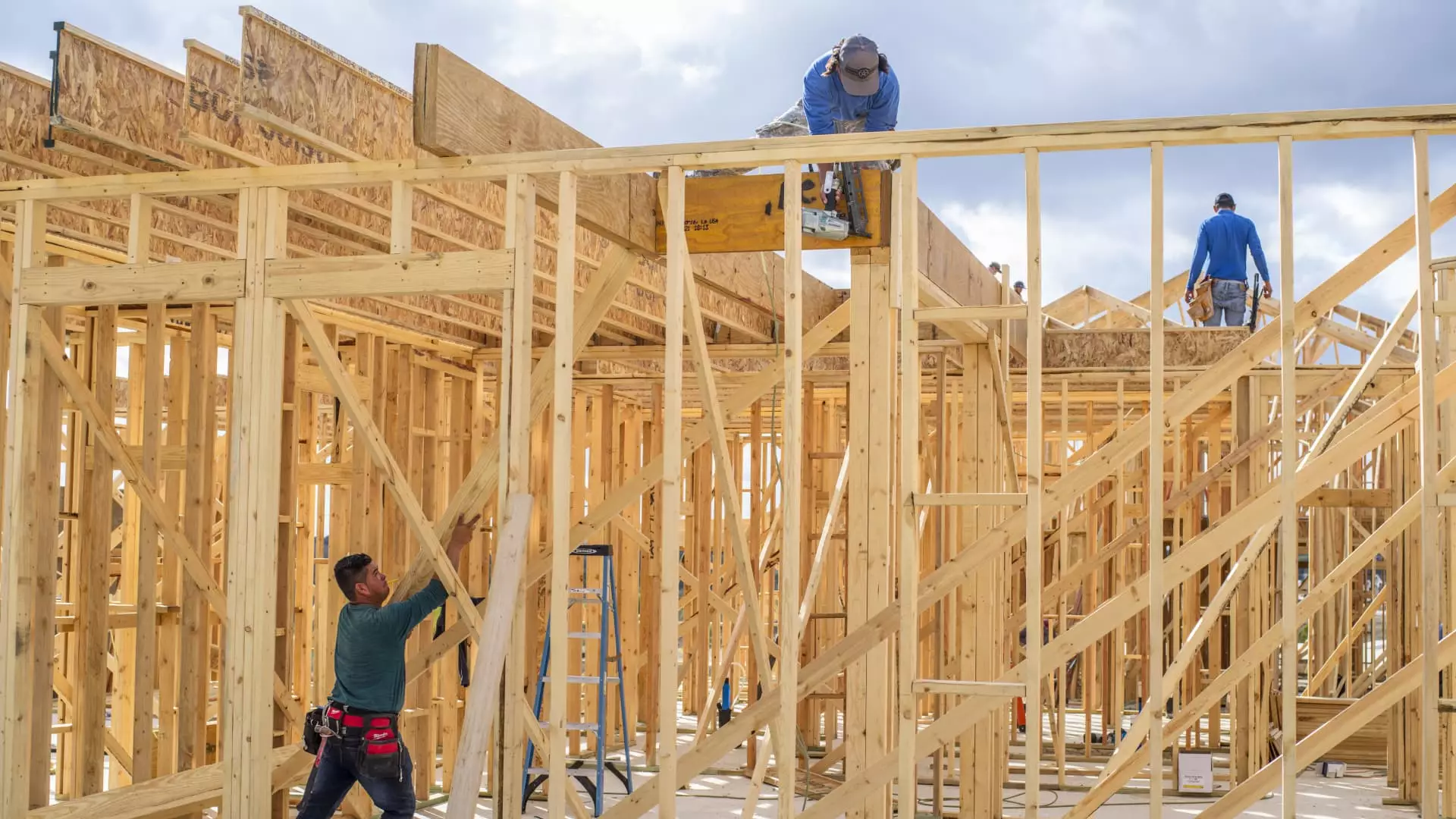In February, sentiment among single-family homebuilders experienced a significant downturn, dropping to its lowest point in five months, with the National Association of Home Builders’ (NAHB) Housing Market Index (HMI) plummeting by five points to a troubling score of 42. This figure is especially concerning as any score below 50 signifies negative outlooks among builders. A year ago, the index was just shy of the positive threshold at 48, illustrating a marked shift in confidence and perspective within the industry.
One of the primary factors contributing to this decline is the uncertainty surrounding tariff policies, which homebuilders fear could substantially increase building costs. Tariffs on materials from Canada and Mexico had been proposed to take effect earlier in the month, raising the specter of higher expenses. The NAHB Chairman, Carl Harris, articulated the builders’ cautious optimism about pro-development policies but acknowledged that the current environment of regulatory uncertainty and rising costs has dampened expectations for growth in 2025.
The sentiment index comprises three key components: current sales conditions, buyer traffic, and sales expectations. Most notably, sales expectations for the upcoming six months saw a dramatic fall of 13 points, signaling worry as this component reached its lowest mark since December 2023. Current sales conditions fell by four points, and buyer traffic also took a hit, declining by three points, thus reflecting an increasingly difficult market.
Market conditions are exacerbated by high mortgage rates, with the average rates on 30-year fixed mortgages hovering over 7% during January and February, a sharp increase from previous rates in the low 6% range. Additionally, home prices have continued to rise compared to the previous year, further constraining affordability for potential buyers. The result is a challenging landscape for homebuilders as affordability remains a critical barrier to entry for many would-be homeowners.
Tariff Concerns and Material Supply
The implications of tariffs on construction materials are especially stark. Robert Dietz, the NAHB’s chief economist, noted that 32% of appliances and 30% of softwood lumber sourced by builders comes from international trade. The ongoing uncertainty regarding tariffs not only affects materials costs but also sows doubt about supply continuity, prompting builders to hesitate in their planning and purchasing decisions.
Despite previously observed gains in builder sentiment since August, driven by expectations of lower mortgage rates and favorable policy adjustments, the current data suggests that optimism is waning. This is critically timed ahead of the spring market, which is traditionally viewed as a peak period for home sales. A decline in builder sentiment could mean even tighter inventory levels as fewer new homes are brought to market.
As builder sentiment sour, there are tangible effects on sales strategies as well. Reports indicate a decline in the percentage of builders offering price reductions from January to February. This drop—from 30% to 26%—represents the lowest level since May 2024, suggesting that builders are becoming more cautious in their pricing strategies. Additional sales incentives are also on the decline, possibly reflecting their decreased effectiveness amidst high prices and mortgage rates.
Builders face the critical challenge of attracting buyers in a market that has increasingly priced many out. With high mortgage rates and elevated home prices, the pool of potential buyers remains sharply truncated. This phenomenon, where incentives offer little to no leverage for buyers already priced out of the market, indicates a fundamental misalignment between builder strategies and market realities.
February’s dip in builder sentiment underscores significant challenges facing the single-family housing market. With rising costs driven by tariffs, high mortgage rates, and dwindling buyer traffic, builders are navigating increasingly uncertain waters. The hope for regulatory reform and other pro-development policies exists, but until tangible changes manifest, the outlook for the housing sector remains cautious at best. Both builders and potential homeowners must adapt to these evolving market dynamics to find paths forward amidst ongoing challenges.

